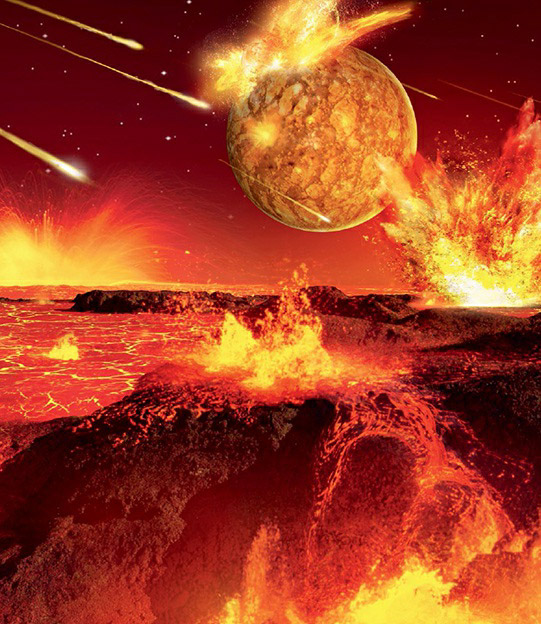The Hadean eon, named after the Greek god Hades, represents the first 500 million years of Earth’s history—a time when our planet was an inhospitable inferno. The young Earth during the Hadean was characterized by a partially or fully molten interior, incessant meteor impacts, and a volatile, volcanic surface. This tumultuous period saw the continuous renewal and recycling of the Earth’s crust due to persistent volcanic activity and catastrophic collisions.
As the era of heavy bombardment waned and volcanic activity decreased, a more stable crust began to form, undergoing alteration through weathering and erosion, particularly with the formation of Earth’s oceans. Consequently, traces of the Hadean are scarce today.
Yet, geologists have unearthed remnants of this primordial world within ancient segments of continental crust. These relics contain minerals that narrate the story of a world transitioning from chaos to habitability.
The Hadean also saw the release of volatile compounds like water vapor and carbon dioxide, forming a dense early atmosphere. Despite the searing temperatures, pockets of hot liquid water might have existed under high atmospheric pressure, setting the stage for the global oceans that now define our planet.
Our inability to find extensive Hadean evidence on Earth has turned scientists’ eyes to the skies. Celestial bodies like the Moon, Mars, and Mercury serve as time capsules, preserving the early solar system’s violent impact history. Studying these extraterrestrial surfaces provides vital clues to piece together Earth’s early narrative.

